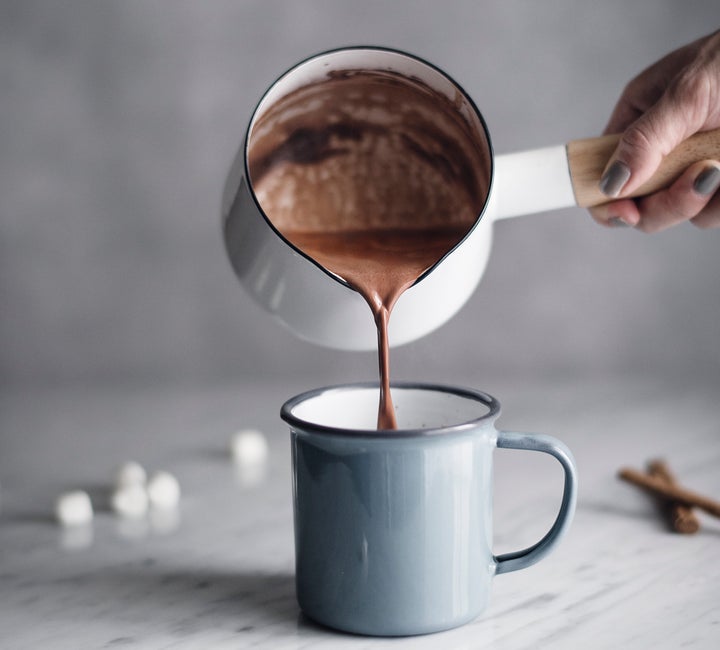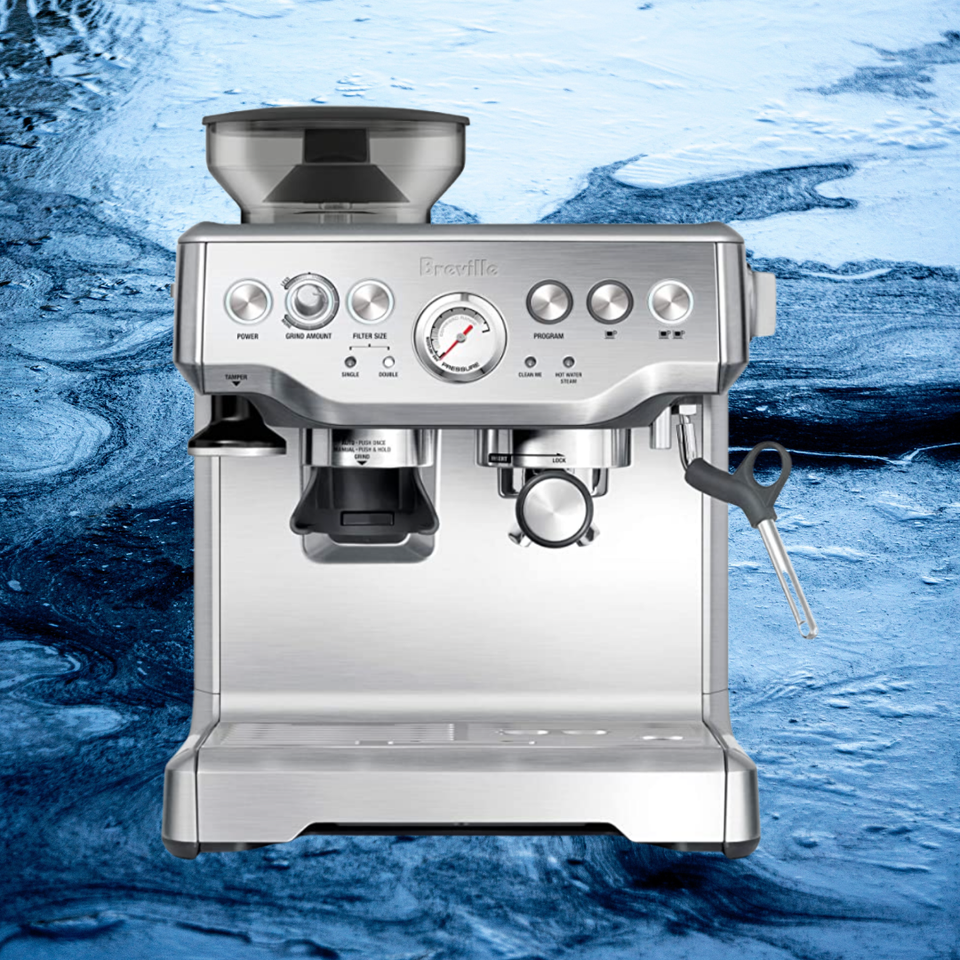
When it’s cold outside, a warm, chocolatey drink is the perfect treat. But is the drink that’s warming your hands hot chocolate or hot cocoa? While the terms are often used interchangeably, they represent two distinct beverages. If you don’t already know the difference, you’ve come to the right place. We talked to three chocolate experts to get to the bottom of this delicious topic. Here’s what they had to say.
First things first: What is hot chocolate?
Hot chocolate is exactly what it sounds like: small pieces or shavings of chocolate that you mix with hot water, milk or cream. It’s like drinking a melted chocolate bar, and the type and amount of liquid you use will determine how thick it is.
“For us, when we’re referencing a beverage made with chocolate (as in actual pieces of chocolate), we call it a sipping chocolate or drinking chocolate,” Lawren Askinosie, chief marketing officer and co-owner of Askinosie Chocolate in Springfield, Missouri, told HuffPost. “This is typically served in a smaller glass like a demitasse or cortado because it’s thick and rich and often made with a heavy cream.”
For a hot chocolate that isn’t quite so thick, you can use milk instead of heavy cream. Kjartan Gíslason, chocolate maker and co-founder of Omnom Chocolate in Reykjavík, Iceland, explained that the richness of the resulting beverage will depend on the type of chocolate you use, the type of liquid you use and the ratio of ingredients used. His go-to recipe is 70% dark chocolate mixed with full-fat steamed milk. “Personally, I like my hot chocolate medium rich,” he said. “I don’t want it to be like fudge when I drink it, but it needs to be thick enough to coat the back of a spoon.”
So what is hot cocoa?
Hot cocoa, on the other hand, is made with cocoa powder, which is dried and ground cocoa solids. Essentially, it’s what most of us are probably drinking most of the time — especially if it comes out of a packet.
Natural cocoa powder has an acidic, bitter taste with a concentrated chocolate flavor. It’s what’s left after you press cocoa butter out of cocoa beans. Most of the hot cocoa mixes you see on supermarket shelves are Dutch processed (also known as alkalized) and contain added sugar and milk powder.
“When cocoa powder is Dutch processed, it means the powder has been chemically treated with an alkalizing agent that reduces the natural acidity (and much of the flavor) of the cocoa powder,” Askinosie said. This process makes the cocoa powder darker and mellows out the flavor. It also dissolves in liquids more readily. (Side note: If you’re a baker, it’s important to pay attention to whether a recipe calls for Dutch processed or natural cocoa powder as one is neutral and the other is acidic, which, depending on the leavening agent you use, can affect rise.)
Cocoa butter (a key ingredient in chocolate) adds fat and richness to the resulting drink, and the lack of it in cocoa powder is one of the key reasons hot cocoa doesn’t have the same level of richness as hot chocolate and has a thinner consistency. If you drink the two side by side, you’ll likely notice that hot cocoa is a touch sweeter and has a more watered-down flavor.
Which is better?
Hot chocolate and hot cocoa offer distinctly different drinking experiences, so the choice is yours.
As far as preparation goes, hot cocoa is often easier to prepare — especially if you’re making the store-bought stuff. Everything gets mixed in a mug and takes only a minute. (Don’t even get us started on the debate over whether you should use water or milk.) When making hot chocolate, on the other hand, you typically need to heat up milk or cream over a stove and whisk in the chocolate pieces to achieve a homogenous mixture. “Bring your milk up to a steam, add the chocolate, and whisk, whisk, whisk!” said Lisa Vega, executive chef of Dandelion Chocolate in San Francisco.
Price-wise, hot chocolate is often more expensive than hot cocoa. Dandelion Chocolate’s hot chocolate mix costs $18 and makes four servings, while a box of Swiss Miss Hot Cocoa costs $2.19 and makes eight servings.
“Hot cocoa is cheaper to make and buy, but that doesn’t mean it has to be bad; it all comes down to preference,” Gíslason said. “Some people don’t like something overwhelmingly chocolatey and that’s fine.” If you’re making hot cocoa from scratch (starting with just cocoa powder), he recommends adding sugar (or your preferred sweetener) and experimenting with emulsifiers and thickening agents like butter or cold-pressed coconut oil.
If you’re looking for something thick, rich and packed with chocolatey flavor, hot chocolate is the way to go. For convenience and nostalgia, it doesn’t get much better than a cup of hot cocoa with some marshmallows on top.
How the experts make hot chocolate (and cocoa)
“I actually love all manner of drinking chocolate, whether it’s made with chocolate pieces or cocoa powder, with milk or water, with extra sugar or without,” Askinosie said. “I like to make my own from scratch using our single origin cocoa powder and depending on my mood and appetite, I’ll alter the recipe.” Her go-to add-ins are a pinch of salt (fleur de sel or Himalayan salt) and a dollop of homemade whipped cream, paired with a square of dark chocolate on the side.
Gíslason’s hot chocolate changes depending on the occasion. For a while, he started his mornings with a cup of hot chocolate made using 100% dark chocolate, water, cinnamon, cayenne pepper, a little bit of salt, butter and honey. If he’s feeling festive, he makes hot chocolate with 70% dark chocolate and steamed milk, topped with whipped cream and shaved dark chocolate.
Vega’s perfect cup of hot chocolate is Dandelion’s Mission Hot Chocolate: 70% Madagascar chocolate blended with cinnamon, allspice, cayenne and pasilla chile. She makes it with oat milk, which rounds out the spicy notes of the chiles and the fruity, acidic flavors of the chocolate.
